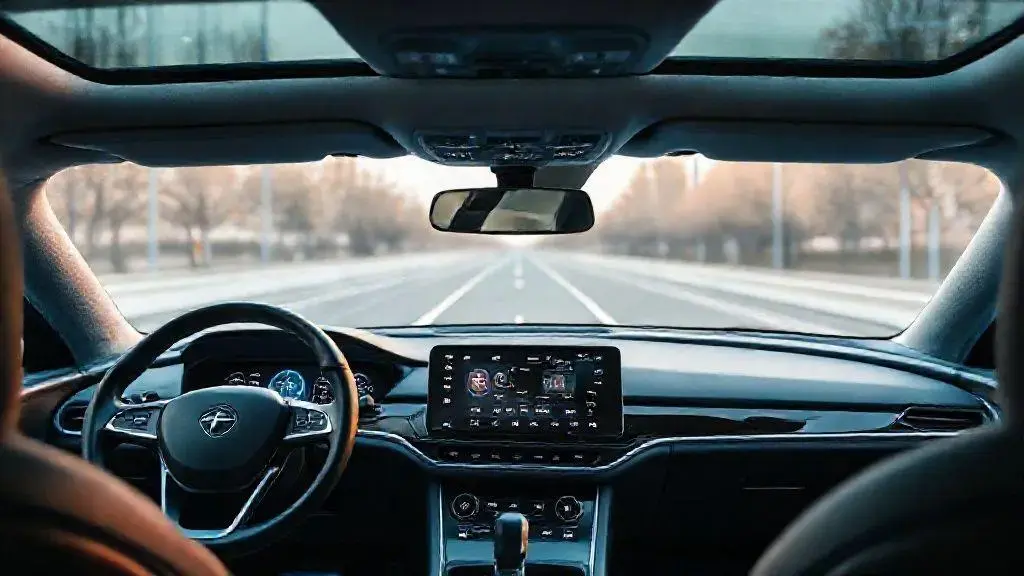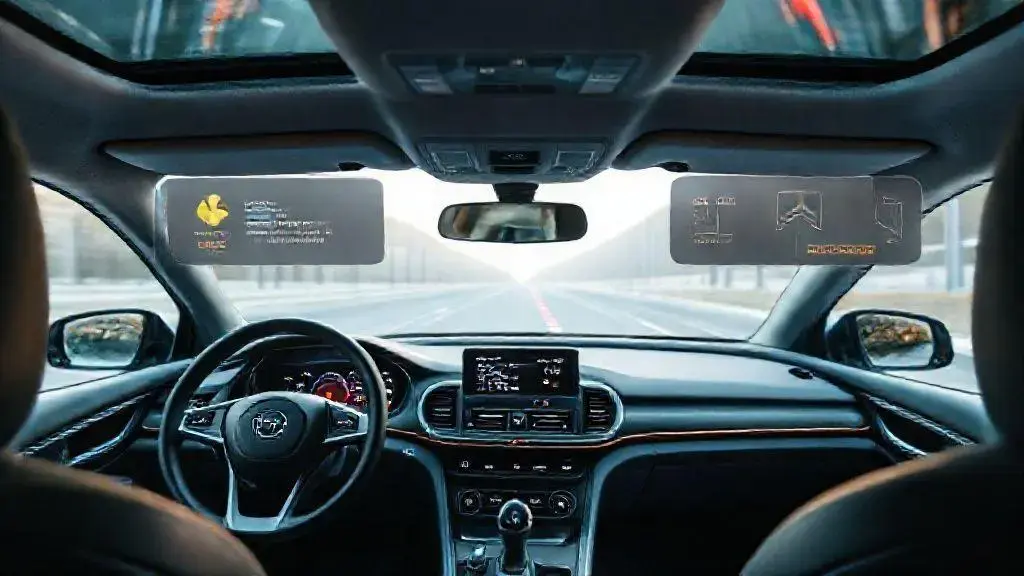Auto industry trends reveal smart technology’s impact

Smart technology in the auto industry enhances safety, improves driver convenience, and responds to consumer demand while offering opportunities for increased efficiency and innovative services.
Auto industry trends reveal the growing influence of smart technology in cars. It’s fascinating to see how these advancements are reshaping our driving experience. Have you ever wondered how smart features make cars safer and more enjoyable to drive?
Understanding smart technology in the auto industry
Understanding smart technology in the auto industry is essential as vehicles evolve into advanced machines. Today’s cars are not just about getting from point A to point B; they now incorporate technology that enhances safety and convenience.
What is Smart Technology?
Smart technology refers to systems and features that make a vehicle more responsive and connected. This includes navigation systems, accident prevention sensors, and even automated driving capabilities. These innovations change how we interact with our cars and improve overall driving experiences.
Key Features of Smart Technology
- Advanced Driver Assistance Systems (ADAS): These systems help drivers avoid accidents by providing alerts and support.
- Infotainment Systems: Modern cars now include touchscreens that offer music, navigation, and communication seamlessly.
- Connectivity: Features like smartphone integration allow drivers to access apps and media directly from their car.
- Autonomous Driving: Some cars are now equipped with technology that allows them to drive with minimal human intervention.
As we look at these advancements, it’s clear that smart technology plays a vital role in enhancing safety features. For example, collision detection systems can warn drivers of potential hazards, potentially preventing accidents before they happen.
Moreover, connectivity means that drivers can stay informed about traffic conditions or even receive software updates remotely. This added layer of convenience is just one of the reasons why consumers are increasingly seeking vehicles with smart technology.
In essence, understanding smart technology illustrates how it reshapes the auto industry. It’s not merely a trend; it’s the future of driving. As technology continues to advance, we will likely see even more innovations that will change the way we think about and use our vehicles.
Key innovations shaping the future of cars
Key innovations are transforming the auto industry, paving the way for smarter and safer vehicles. These advancements are not only enhancing performance but also improving overall driver experience.
Electric Vehicles (EVs)
One of the most significant shifts is the rise of electric vehicles. These cars provide a cleaner alternative to fossil fuel engines, helping to reduce greenhouse gas emissions. As battery technology improves, EVs are becoming more efficient and have longer ranges, making them increasingly attractive.
Autonomous Driving Technology
Autonomous driving technology is another major innovation. This technology allows vehicles to navigate and drive themselves with minimal human input. Companies are investing heavily in this area to create safer roads and reduce accidents.
Connected Car Features
- Vehicle-to-Everything (V2X): This technology allows cars to communicate with each other and infrastructure, enhancing safety and traffic management.
- Enhanced Infotainment Systems: Modern vehicles come equipped with systems that provide real-time traffic updates, navigation, and entertainment options, all accessible through a user-friendly interface.
- Over-the-Air Updates: Many new cars now allow drivers to update software and features remotely, ensuring that they always have the latest technology.
- Smart Safety Features: Innovations like automatic emergency braking and lane-keeping assist are becoming standard, helping to prevent accidents.
It’s clear these key innovations are not just trends; they are setting the foundation for the future of cars. The shift towards cleaner energy and advanced safety features reflects a growing commitment to enhance driving experiences and protect the environment. With every technological advancement, the journey towards a smarter automotive landscape becomes clearer.
Impact of smart technology on driver safety

The impact of smart technology on driver safety is significant and continues to grow. With the rise of innovative features, vehicles are becoming more equipped to prevent accidents and enhance overall safety.
Advanced Safety Features
Modern cars are often outfitted with advanced safety features that actively monitor the environment. These include collision detection systems that can sense an imminent crash and alert the driver. In some instances, these systems can even apply the brakes automatically to avoid an accident. Such technologies are crucial in reducing collision rates on the road.
Emergency Assistance Systems
Another vital component of smart technology is emergency assistance. Features like automatic emergency calling can contact authorities if a severe accident occurs. This capability can be life-saving, ensuring swift help is on its way without the driver needing to take action.
Driver Monitoring Systems
- Fatigue Detection: Some vehicles come with systems that monitor the driver’s alertness and can recommend breaks when fatigue is detected.
- Distraction Alerts: These warnings notify drivers when their attention starts to drift from the road, helping to maintain focus while driving.
- Blind Spot Monitoring: This feature alerts drivers to vehicles in their blind spots, significantly reducing the risk of lane-change accidents.
- Adaptive Cruise Control: This function adjusts the car’s speed based on the flow of traffic, aiding in maintaining safe distances from other vehicles.
With features like these, smart technology is reshaping how we think about safe driving. It empowers drivers with tools to make smarter decisions, enhancing their ability to respond to potential hazards. The integration of these technologies into everyday vehicles not only helps prevent accidents but also fosters peace of mind for drivers and passengers alike.
Consumer preferences and the demand for smart features
Consumer preferences are rapidly changing, and there is a strong demand for smart features in vehicles today. As technology advances, buyers look for cars that offer more than just transportation—they want connectivity and enhanced convenience.
Trending Smart Features
Many drivers are increasingly interested in features that improve their driving experiences. Some of the most sought-after smart features include:
- Adaptive Cruise Control: This feature helps maintain a safe distance from the car in front by automatically adjusting speed.
- Bluetooth Connectivity: Many consumers want to connect their smartphones to their cars for hands-free calls and music streaming.
- Navigation Systems: Real-time traffic updates and GPS systems are essential tools for modern drivers, making travel more efficient.
- Heated and Cooled Seats: Comfort features such as these have become increasingly popular in higher-end vehicles.
As we observe the market, it’s clear that consumers appreciate vehicles equipped with technology that enhances safety and convenience. For example, the popularity of lane departure warnings nearly doubled in recent years, as drivers value the additional safety assurance.
Furthermore, younger generations tend to prioritize technology and entertainment options. They seek features like integrated apps and voice command systems, allowing them to interact with their vehicles in novel ways. Understanding these demands helps manufacturers develop vehicles that cater to modern preferences.
Ultimately, the demand for smart features reflects a broader shift in consumer expectations. Buyers are more willing to invest in technology that offers a better and safer driving experience, indicating a significant trend in the automotive industry.
Challenges and opportunities in smart vehicle technology
Challenges and opportunities in smart vehicle technology present a dynamic landscape in the auto industry. As technology continues to evolve, manufacturers face hurdles while also discovering new possibilities.
Technological Challenges
One of the major challenges is ensuring data security. With the increase in connectivity features, vehicles are more vulnerable to hacking. Manufacturers must invest in robust cybersecurity measures to protect sensitive information.
Integration Issues
Another challenge involves integrating different technologies into one cohesive system. For example, connecting multiple smart features like navigation, entertainment, and safety systems seamlessly can be complex. This requires extensive testing to ensure that all components work well together.
Consumer Acceptance
Additionally, consumer acceptance of smart vehicle technologies can be slow. Some people may hesitate to adopt new systems, fearing that they might malfunction or not improve their driving experience. Overcoming this skepticism is crucial for widespread adoption.
Opportunities for Growth
- Enhanced Safety: Smart vehicle technologies can significantly reduce accident rates by offering automated safety features.
- Increased Efficiency: These technologies can improve fuel efficiency and reduce emissions, which appeals to environmentally conscious consumers.
- Data Utilization: Manufacturers can harness data from connected vehicles to improve products and target marketing efforts effectively.
- Innovative Services: Opportunities for services such as ride-sharing and subscription models are on the rise, changing how consumers think about ownership.
In summary, navigating the challenges of smart vehicle technology can open doors to exciting opportunities. Manufacturers who embrace innovation while addressing these obstacles are likely to lead the industry in the coming years, driving both safety and sustainability forward.
In conclusion, the auto industry is rapidly evolving, with smart technology influencing every aspect of vehicle design and functionality. As we navigate through challenges like data security and consumer acceptance, the opportunities for enhancing safety, efficiency, and the driving experience are immense. Embracing this technology not only makes driving safer but also paves the way for a sustainable future. The automotive landscape is changing, and those who adapt to these advancements will lead the way forward.
\n\n
\n
FAQ – Common Questions About Smart Technology in the Auto Industry
What are some key benefits of smart technology in cars?
Smart technology enhances safety, improves convenience, and provides better connectivity features for drivers.
What challenges do manufacturers face with smart vehicle technology?
Manufacturers face challenges including data security, integration of different systems, and ensuring consumer acceptance.
How does consumer demand influence the development of smart features?
Consumers are increasingly seeking vehicles with advanced technology, prompting manufacturers to prioritize smart features to meet these expectations.
What opportunities exist with the advancement of smart vehicle technology?
Opportunities include enhanced safety measures, increased fuel efficiency, and the development of innovative services such as ride-sharing.





